by Dave Workman | Senior Editor
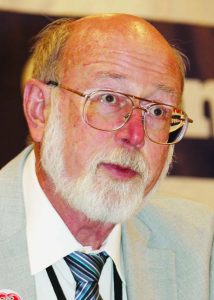
David T. Hardy, Esq.
When it comes to restoring the Second Amendment to its rightful place and prominence, building coalitions at the state level is extremely important, and once the seed is planted, it will grow.
That’s the underlying message of a Sunday morning Oct. 1 panel discussion on state coalition building that opened the second day of the Gun Rights Policy Conference (GRPC) in Dallas. Brent Carlton, president of Comm 2A, a Massachusetts organization, told the audience of gun rights activists, “Remember, the Second Amendment is contagious.”
He warned about anti-gunners playing identity politics, while reminding the crowd that the Second Amendment is not just for a certain type of people. Anti-gunners, he said, would “try to divide us.”
Carlton appeared on the opening morning panel with Tom Bolioli, a Comm 2A director, who encouraged activists to get involved in existing organizations rather than trying to duplicate their work. This strengthens the effort and can expand “the audience’ to bring in more members.
The 32nd annual conference set a new record for the number of speakers on the agenda. On the previous afternoon, the audience heard from several speakers including attorney and Second Amendment historian David T. Hardy, who explained the history of gun rights litigation that resulted in the 2008 Heller ruling and 2010 McDonald decision. Both of those Supreme Court rulings affirmed that the Second Amendment protects an individual right to keep and bear arms, but according to Hardy, it took years of scholarly research and legal activity to reach those victories.
In the beginning of the legal effort, Hardy recalled, “Nobody thought much about the Second Amendment.” He got an assignment to research the amendment and began to understand that it had “not particularly much to do with the militia and very much with an individual right to arms.”
When the Second Amendment Foundation held its first legal conference on the subject, Hardy noted that “suddenly, scholarship was created.”
Hardy and a handful of other young legal minds began digging away, and the Second Amendment really got a boost when Sanford Levinson authored a Yale Law Review article on “The Embarrassing Second Amendment.” The thrust of the article was essentially to question how can scholars treat one civil right differently from other civil rights.
Before the Heller and McDonald rulings, Hardy said “everyone was scared” to bring a Second Amendment case to the high court. Nowadays, gun rights groups are hoping to bring a right-to-carry lawsuit to the court, to strengthen the notion that the right to bear arms applies outside the home.
Reversing School Disarmament
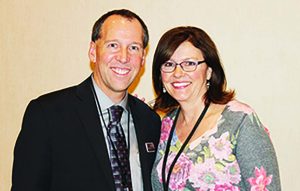
Jim Irvine and Laura Carno.
Following Hardy’s recollections, Jim Irvine, president of the Buckeye Firearms Association and Laura Carno, founder of Coloradans for Civil Liberties, offered a discussion on arming teachers and school staff for student safety.
Irvine provided an update on the increasingly popular FASTER (Faculty/Administrator Safety Training and Emergency Response) program that has been in operation in Ohio for the past couple of years. There has been growing interest in the training, and a new section on trauma has been added, he said.
Carno, who attended a FASTER course last year, reported that a course has been offered in Colorado that resulted in lots of media attention.
The narrative has shifted from “a gun thing” to “a school safety thing,” they explained.
While restoring school safety by allowing educators to be armed is important, it is also critical to reach out to the inner city, and that’s where the Outreach Initiative comes in. A panel discussion featuring Rick Ector, Shaneen Allen, Maj Toure and Marcus Allen Weldon captured the audience’s interest.
Ector, founder of Legally Armed in Detroit, led the discussion. An NRA training counselor who trains instructors, Ector explained how he became involved in the gun rights struggle and began teaching women how to defend themselves. This activism was ignited by the story of a young woman who was murdered and “dumped like trash.”
He now sponsors an annual event for women in the spring, and hundreds of women have attended. Ector plans to grow the event even more.
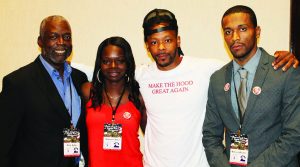
The GRPC Outreach Initiative panel, left to right: Rick Ector, Shaneen Allen, Maj Toure and Marcus Allen Weldon.
Weldon, author of “The Santa Shooter,” was helping a woman change a tire when he had to act in self-defense and he ended up in jail. This incident occurred just before Christmas in 2014; hence the title of his book, and Weldon became a victim of the legal system. He spent thousands of dollars on legal bills to defend himself.
He asserted to the audience that, “Prosecutors do lie.” For him, writing the book was therapy and attending the conference was also therapy, he said.
Toure, founder of Black Guns Matter, challenged the audience by observing, “There’s a lot of information in this room, but you have no idea how to reach out to my demographic.”
He also observed, “You don’t have to explain diversity, you just have to be diverse.”
It was Allen, however, who seemed to grab most attention. Activists in the audience are familiar with her horror story about having a firearm in New Jersey across the bridge from her Philadelphia hometown. Arrested and facing a long prison sentence for telling the truth at a traffic stop, Allen became a victim of the Garden State’s draconian gun control law.
It was only a pardon from Gov. Chris Christie that set things right, but Allen still lost her job and spent six weeks behind bars while gun owners across the country flooded Christie’s office with complaints. Allen was legally licensed to carry in Pennsylvania, but New Jersey doesn’t recognize out-of-state permits.
Allen appealed to her audience to pressure Congress for passage of national reciprocity in order to prevent future incidents like hers.
Gun Owner Insurance
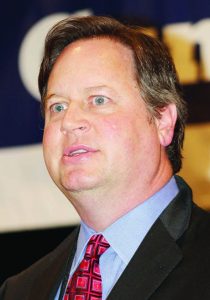
Edwin Walker.
A different kind of legal trouble than Allen faced was the topic discussed by the next speaker, Edwin Walker with U.S. Law Shield. This is one of four or five major gun owner insurance efforts to protect people who use firearms in self-defense.
Noting that insurance groups are “out there on the front lines” where legal problems begin, Walker said his organization has defended good people and seen what happens when gun owners act irresponsibly.
“You cannot respond to verbal provocation with deadly force,” he cautioned, later adding, “Please be vigilant out there. Please use discretion.”
He warned that the media and gun prohibitionists are “out there to exploit the next road rage.”
Walker was followed to the podium by well-known author and researcher John Lott, whose books have become almost required reading among gun rights activists.

John Lott.
Using colorful charts, Lott discussed how the gun control movement had peaked in the 1990s, and that it has seen something of a small revival in recent years. However, more people believe they are safer with guns in the home, and Lott credits part of that with the media’s coverage of self-defense gun uses.
Estimating there are now about 16.5 million active concealed carry permits and licenses in the United States, Lott predicted that reciprocity legislation would begin moving in Congress soon. There is some form of reciprocity between many states, he added, except in states such as California, Oregon, New York and New Jersey, and politicians from those states will oppose the legislation.
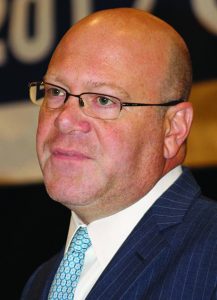
Todd Rathner.
Another piece of “pending” legislation deals with silencers. The Hearing Protection Act did not appear to be moving even as an attachment to another bill, according to Todd Rathner with the NFA Freedom Alliance. He called the National Firearms Act “one of the single worst gun laws ever passed.”
According to Rathner, the law is “so poorly written that the ATF changes its interpretations.”
There is considerable opposition to legalizing sound suppressors, he acknowledged, and much of that is the handiwork of organizations supported by anti-gun billionaire Michael Bloomberg. The bad news is that even if it passes the House, Rathner suggested that the Hearing Protection Act might be “doomed in the Senate.”
Prescription for Freedom
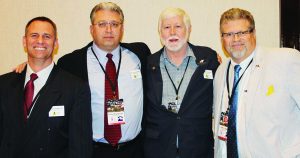
The doctors (l-r): Sean Brodale, MD, Arthur Przebinda, MD, Robert Young, MD, and John Edeen, MD.
Doctors for Responsible Gun Ownership had a full panel to close out the first day’s discussions. Led by Dr. Robert Young, the panel explained why it is a “boundary violation” for family physicians to be inquiring about firearms in the home. He was followed by doctors Arthur Przebinda, Sean Brodale and John Edeen.
Young, a psychiatrist, told the audience that the “single real public danger” of firearms and shooting is hearing loss. He was supportive of the proposed Hearing Protection Act, which would make sound suppressors (“silencers’) more accessible to the general public. Hearing loss begins, he explained, when noise exceeds 120 decibels and this is produced by the sound of a .22-caliber rimfire discharging, so people shooting far more powerful firearms would experience even greater problems.
This results in permanent hearing loss, which is the thrust of the proposed federal legislation, which would make silencers more accessible by removing the current federal paperwork and tax requirements.
“The Hearing Protection Act is our best chance of addressing this,” he said.
Przebinda discussed the legal conflict in Florida over doctors offering gun advice in the examination room. He said the 11th District Court had struck down most provisions of the controversial “docs versus Glocks” law that the Florida Legislature adopted a few years ago, so now Sunshine State physicians once again “have cover” against “badgering” patients about firearms.
He also announced a project that will offer the public a means to privately get the names of physicians who do not use their offices to preach about guns. It will be found at 2Adoc.com.
Brodale, who is an emergency room physician, discussed demonstrating with firearms as political props, and he cautioned against it. He said that such an action might be construed as an attempt to intimidate other people, and that “crosses the line.”
He encouraged gun owners to “come together” with others without creating a political hurricane.
Wrapping things up for the Saturday session, Edeen confided that he dislikes “gun-free zones,” especially in hospitals.
“They are failures,” he observed.
There have been shootings in hospitals that were not stopped by signs declaring the facilities to be off-limits to firearms, and he suggested that these regulations deprive people of their civil rights under color of law.
Traditional Outreach
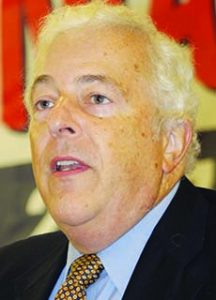
Herb Stupp.
Following Sunday morning’s session on state coalition building, a panel of media professionals discussed using traditional outreach to advance gun rights. Herb Stupp, who serves on the CCRKBA Board, challenged the audience to “find one fair person in a news organization” and work with that individual.
“The media doesn’t really understand the gun issue,” Stupp observed, adding that “reporters and editors are overwhelmed.”
He said because media organizations are shrinking, reporters are always looking for easier stories and that gun rights advocates can help the press by providing interesting news. Another strategy is to get local newspaper columnists interested in a story.
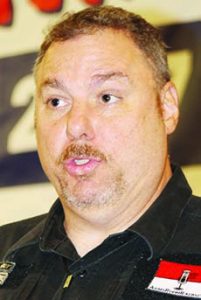
Mike Piwowarski.
Stupp also recommended writing letters to the editor, contacting broadcast news organizations’ assignment editors and even reach out to journalism schools.
“Try honey, not vinegar first,” he counseled.
Mike Piwowarski, host of Arms Room Radio, reminded the audience that “traditional outreach is not the internet.” He suggested writing articles for weekly news magazines or community newspapers, which are always looking for good content. The weekly magazines are supplements to larger newspapers, and people do read them.
Author Chris Bird said there is “a definite need” for people to write about firearms, and he encouraged activists to “get involved in social media.” His message: “promote, promote, promote.”
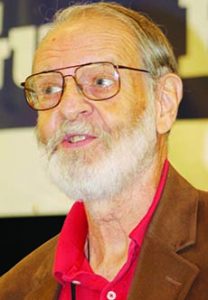
Chris Bird.
He said books provide “knowledge in a small package; something that you can hold in your hand.” His first book, the Concealed Handgun Manual, has gone through six updates and is still very popular.
Yehuda Remer, creator of the Safety On books, thanked former President Barack Obama “for inspiring me to write, and here I am today.”
Remer explained how he got involved in writing, noting that he came from an apolitical family, and he did not really know much about the Constitution. That changed when he began studying the Second Amendment.
Ultimately, his “journey to find out about the Second Amendment” led him to teach his children about gun safety and that led him further to write the book.
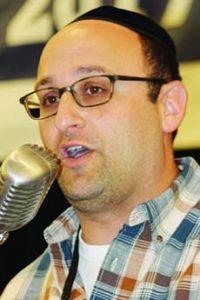
Yehuda Remer
“In order to protect our constitution,” he said, “we have to teach our kids.”
TGM Senior Editor Dave Workman told the audience that “we have to understand that not everybody communicates the way we do.” He and SAF Founder Alan Gottlieb occasionally co-author Op-Ed pieces for various newspapers that reach lots of readers who might not get exposure to gun issues regularly.
He concurred with others on the panel about reaching out to local reporters and providing information from the FBI Uniform Crime Report to help refute some of the claims made by anti-gunners.
Using New Media
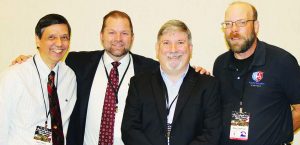
The New Media panelists (l r): Don Irvine, Charlie Cook, John Richardson and Paul Lathrop.
Don Irvine, chairman of Accuracy in Media, said using new media to do podcasts and improve video skills is “not really that difficult to do.” Like so many other speakers, Irvine said most reporters know very little about firearms.
He uses Facebook Live to do morning podcasts to “build a following.” He has been amazed at the reach he has achieved. He cautioned against being foolish, however, because that will hurt one’s credibility with the intended audience.
Charlie Cook, host of the YouTube program “Riding Shotgun with Charlie,” said his podcast provides the opportunity to connect with people. He broadcasts from his car with three different cameras focused on him, and the formula has worked.
His podcasts have gotten 2.6 million views and he found that people are willing to react. He said “podcasting is great” and that people can subscribe to podcasts. He also encouraged people to do their own podcasts.
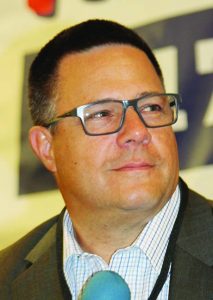
Brent Carlton.
Cook has done some zany things, such as shooting and playing the trumpet at the same time, and it has added to the popularity of his podcasts. He promoted the idea of bringing “fun ownership to gun ownership.”
Paul Lathrop with Polite Society Podcast – which broadcast the GRPC – suggested doing a “podfest” geared toward Second Amendment activists. This year, he approached SAF’s Andrew Gottlieb to do the first-ever Second Amendment media workshop on the day before the conference. It attracted several online activists who discussed the good and bad parts of the new media.
Lathrop promised that it would not be a one-time-only event, and that there will likely be a second session at next year’s GRPC, which will be held in Chicago.
Blogger John Richardson, whose popular No Lawyers, Just Guns and Money blogs is one of the more popular on-line resources for gun rights activists, also works on the Polite Society podcast. He told the audience to use the media to “fight enemies of freedom.”
Richardson asserted that people “don’t trust traditional media.” They are looking for alternatives and one way to build an audience is to use various apps that reach out to the younger generation.
Knife Rights + More
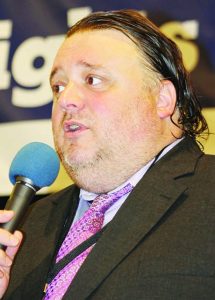
Thomas Balioli.
An annual part of the conference is a report on Knife Rights, because the Second Amendment is not simply about firearms. He said Knife Rights is the “second front” in the fight to protect the Second Amendment.
Doug Ritter, founder and president of Knife Rights, Inc., provided an update on his organization’s activities, which included knife law reform actions in Colorado, Illinois, Georgia, Montana, Michigan and Texas. He said 2017 had been one of the most productive years ever for his movement, and in some of those cases, bans on switchblade knives were repealed. In the case of Texas, the ban on carrying Bowie knives was repealed, he said.
“Knife Rights is rewriting knife law in America,” Ritter declared. “All knives matter.”
He said Knife Rights is “not done yet because we don’t quit until you can carry any knife anywhere.”
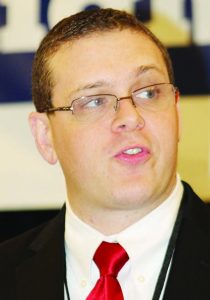
Josh Blackman.
Ritter was followed by attorney Josh Blackman, an associate professor at the South Texas College of Law. Blackman reported on more Second Amendment litigation, and reminded the room that the Supreme Court has been repeatedly reluctant to take another Second Amendment case since the 2008 Heller and 2010 McDonald rulings.
Second Amendment rights are no less protected by the Constitution than other rights, he stated.
“Why not treat it the same,” he wondered.
He asserted that even though the high court has affirmed the Second Amendment right to keep and bear arms, lower federal courts have ignored those rulings.
Gun Rights in the LGBTQ Community
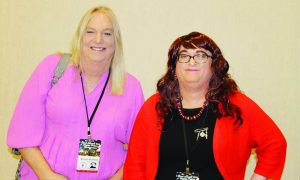
The LGBTQ panel featured (l-r) Nicole Stallard and Erin Palette.
Nicole Stallard with the California Pink Pistols and Erin Palette, creator of Operation Blazing Swords, spoke about expanding gun rights in the LGBTQ community.
Stallard acknowledged that a majority of gays are anti-gun, but since the attack on an Orlando nightclub called the Pulse about two years ago, interest in personal protection has been growing.
“It was a major wake-up call,” Stallard said. “Our organization had 500 percent growth because of that.”
Palette noted that the easiest way to talk to someone who is gay is to offer to teach them how to shoot.
“The Pulse shooting was our 911,” Palette said. “We are disproportionally affected by crime.”
Operation Blazing Sword brings together the gun community and gay community because both believe in rights. Information is available at BlazingSword.org.
The Better Half’
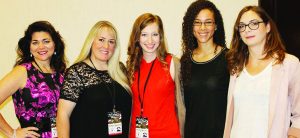
The “Better half” panel (l-r): Cheryl Todd, Robyn Sandoval, Rachel Malone, Sarah Cade and Paloma (no last name by request).
The next, all-female panel discussed women and guns, and empowering women to defend themselves.
Cheryl Todd, co-host of Gun Freedom Radio, began the discussion by talking about Viking women. The remains of one woman were found with weapons, suggesting that she had been a warrior, and that women who are prepared to defend themselves do not fit the mold that progressive politicians want.
She observed that average people were “ordinary warriors fighting extraordinary battles.”
Robyn Sandoval, executive director of A Girl and A Gun Women’s Shooting League noted that shooting can be part of the family lifestyle. Firearms, ammunition and training become part of the family budget.
She reached out to women and explained to them about protecting their children. She said sometimes women need to be invited to events to get them involved.
“Sometimes, women need this encouragement,” she said.
Her group’s motto is “It’s more than shooting.”
Sarah Cade, a team leader with the Minnesota Gun Owners Caucus, said she had heard two conflicting messages during the conference. One message is for more outreach and the other suggested that those who are not like gun owners are “the enemy.”
Insisting that she was speaking only for herself and not representing anybody, Cade told the audience that “Your enemy is me.” She explained that she was “the token liberal gun owner” and that she does not want to be anyone’s enemy.
Cade said gun control is “100 percent about the culture war, it’s not about the gun.” She contended that the way to remove gun control from the Democratic Party plank is to “come together.” She promoted personal responsibility and challenged people to be careful about what they are “putting out” because it reflects on other shooters.
She said many liberals believe in self-defense, but they don’t talk about the Second Amendment “the way you do.”
But she has interacted with other gun owners, and she encouraged people to “stop paying attention to the trolls.”
Rachel Malone, operations director for the Republican Party of Texas, described how she was introduced to shooting and the politics of gun rights versus gun control. She used the opportunity to introduce a woman who identified by her first name, Paloma, and they chatted about her background as well. Paloma grew up in central London, with liberal parents.
Paloma’s advice to the audience was simple. If you expect the government to take care of you, you lose your power as an individual.
Malone stressed that “we are the new face of gun rights.”
Paloma acknowledged that she “debates with people constantly” about guns, and noted that people have the power as individuals to “pre-empt” the government. Now is the time to start acting on that
Malone also noted that in any discussion with anti-gunners, the strategy is always incremental. They are careful not to reveal their entire agenda, just what they might want now and then they will want more later.
Wrapping it up
The final speaker of this year’s conference was author/activist Alan Korwin, who warned the audience that “we are our own worst enemies.”
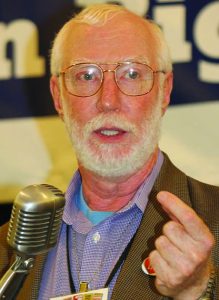
Alan Korwin.
Korwin called gun-free zones “dangerous, reckless and worthless.” He panned “no fly” lists because people can wind up on such a list for no explained reason, and it is done in the name of stopping terrorism.
“It’s not about guns,” he said, “it’s about freedom; your right to do what you want and not have somebody tell you.”
He also asserted that neither Republicans nor Democrats are “on your side.”
“The government is not on your side,” he stressed.
Korwin noted that “nobody is willing to use a gun for its intended purpose.” He criticized people who worry about gun confiscation because the gun is the tool to prevent that.
He also advised gun owners to stop following the media and trying to fix the media.
“They are unfixable,” he said. “They don’t get it. They’re practically Marxist-communists themselves. They think we should be controlled. They think guns should only be in the hands of the government. They are statists. This is what we face.”
Korwin called political correctness “cultural Marxism.”
“The only thing that is keeping all of you safe is that you are armed,” he concluded.
Thus, the 2017 Gun Rights Policy Conference came to a close. In 2018, GRPC moves back to Chicago in September. Both the Second Amendment Foundation and Citizens Committee for the Right to Keep and Bear Arms will be posting information on that event next year in plenty of time for pre-registration.



